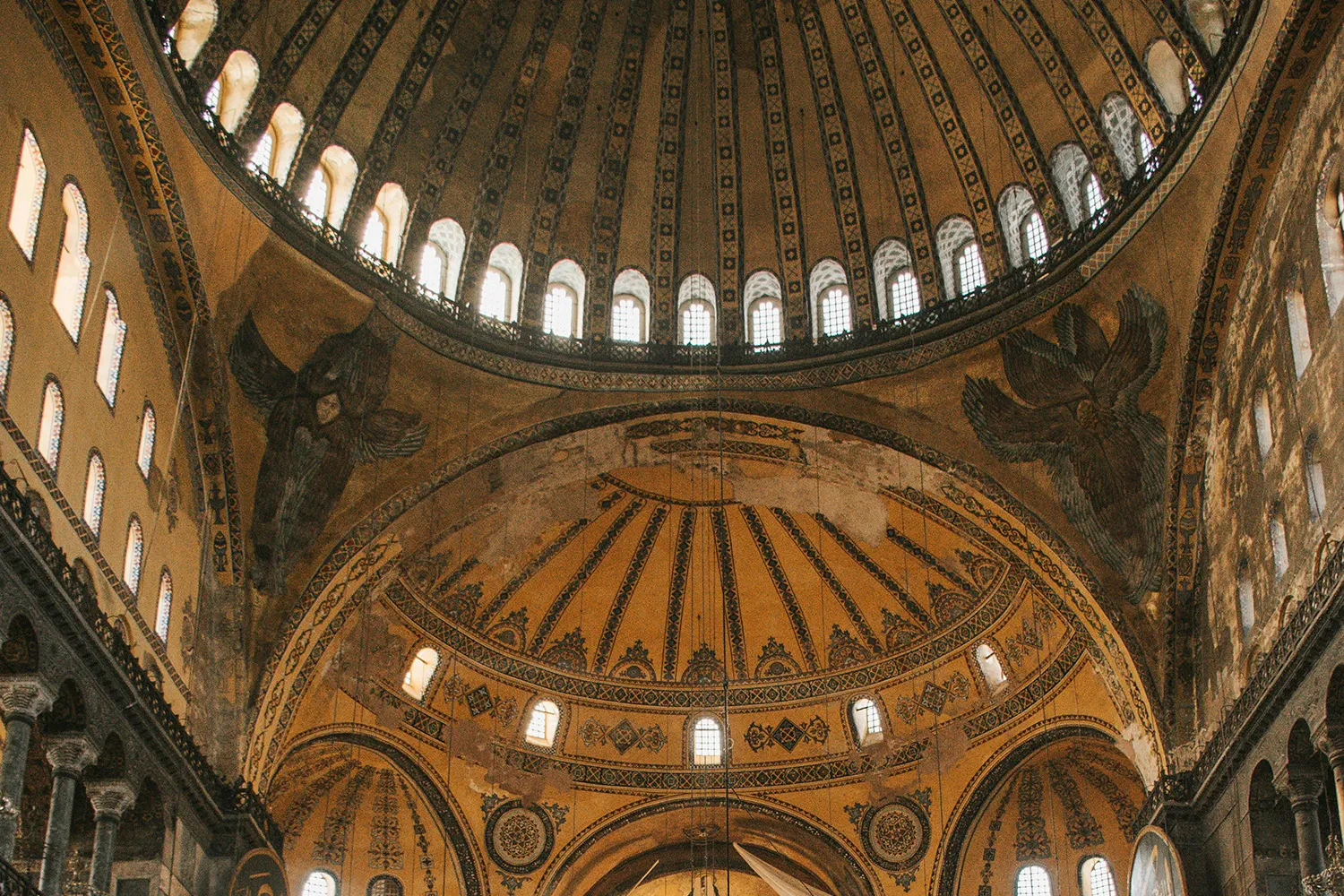Skylights in Islamic and Byzantine Architecture
Today, skylights grace the rooftops of modern homes, turning ordinary interiors into bright, open spaces. But their origins go far back in history, long before the invention of glass panes and aluminum frames. Even then, architects of Byzantium and the Islamic East sought to draw light from above into the depths of buildings, using natural illumination as a deliberate architectural tool.

Byzantium: When Light Becomes Part of the Liturgy
One of the most striking examples of architectural light design is the Hagia Sophia in Constantinople (modern-day Istanbul, Turkey), built in the sixth century. Its central dome rests on a ring of forty windows evenly placed at its base. Through these, soft daylight pours into the interior, creating a glowing halo around the dome. This effect makes the dome appear to float, which is why people at the time often said it was hanging from heaven on a golden chain. The light was not just decorative. It was used to create a sense of spiritual presence, almost like something you could feel.
In this early use of overhead light, we can already see the idea of the fixed skylights. It was not just practical but filled with symbolic meaning.
The Islamic East: Starlight and the Architecture of Water
In the architecture of the Islamic East, skylights took on a different form. In Ottoman hammams, or traditional bathhouses, domes were pierced with round or star-shaped openings. These apertures were fitted with stone or ceramic grilles, or sometimes left open to provide not only light but also natural ventilation. Sunbeams entering the space gently dispersed through the steam, creating an almost theatrical atmosphere.
This approach hints at the concept of fresh air skylights, where an overhead opening works both as a source of light and a natural air shaft. Even without glass, Eastern architects instinctively applied similar principles.
Light in Mosques: Nur as an Architectural Element
Mosques across the Islamic world also embraced overhead light as an essential part of their spatial design. In Persian architecture, as well as in the grand mosques of Syria and Turkey, domes often contain slits or rest on drums with windows that channel sunlight into the interiors. Light in these sacred places was seen as an embodiment of the Qur’anic idea of nur—divine radiance descending from the heavens.
This glow did not just illuminate the interiors but also highlighted mosaics, arabesques, and calligraphy, making the entire building feel alive. Just like in Byzantine churches, lighting in mosques carried deep symbolic meaning.
From the Past to the Present
Today’s residential skylights carry on this ancient tradition. They let in up to three times more light than vertical windows and help reduce energy consumption. Many newer models include sensors that react to carbon dioxide or humidity and open automatically to let in fresh air. Today, skylights are seen as an essential part of healthy and energy-efficient buildings.
Even though materials and construction methods have changed, the basic idea has not. Natural light still connects people to the sky and fills interiors with a sense of openness, calm, and beauty.
